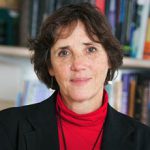NbSI and UN Environment Programme World Conservation Monitoring Centre (UNEP-WCMC)
5A. Understanding and ensuring positive outcomes for biodiversity and ecosystem health of NbS for climate change mitigation and adaptation
Read full session summaryWatch session recording on YouTube
Download a full report including all session summaries and take-homes (PDF).
Session summary
Session 5, Understanding and ensuring positive outcomes for biodiversity and ecosystem health of NbS for climate change mitigation and adaptation, highlighted that although there are significant potential synergies (e.g. biodiversity & climate mitigation), there is a need to recognize and manage potential for trade-offs between biodiversity, climate, and social outcomes. Good NbS must, by definition, support biodiversity. However, as not all projects badged as NbS have been shown to achieve this in practice, ways by which we can ensure and assess positive biodiversity outcomes were discussed.
The first speaker, Robin Chazdon, began by emphasising how securing multiple benefits from NbS in an equitable manner requires a proactive approach, including a long-term planned deliberate response that is holistic.
“Within a socioecological system the ecosystem controls the flow of services. NbS help to modulate the flow, and with prudent use and management enables the cycle to continue.” – Robin Chazdon
Celia Harvey then spoke about the need to scale up NbS for adaptation (Ecosystem-based Adaptation – EbA) and its potential for helping governments deliver on multiple interlinked policy agendas and thus the importance of integrating planning for EbA into all sectors, including infrastructure and agriculture. She pointed to the need for deploying innovative approaches to finance EbA, and described some opportunities to attract greater public and private investment in EbA, such as green bonds, resilience bonds, and debt for nature swaps.
Tom Finch presented results from scenario modelling work for the UK, mapping the potential of NbS for mitigation potential, biodiversity (bird populations), food production, and land use for renewable energy, and identifying the locations within the UK that opportunities for benefits between these would be the highest, as well as where the trade-offs would be.
“To balance competing objectives, NbS need to be done smartly – such as via strategic land-use frameworks, to maximise benefits and minimise costs.” – Tom Finch
Lian Pin Koh then presented research on the potential of NbS for mitigation on a global scale, mapping priority regions for green carbon, blue carbon and urban carbon sequestration, as well as where the greatest potentials for financial returns on investments are. He showed how more benefits for food security, water security, and biodiversity could be delivered with a higher carbon price.
Isabel Key then explored the evidence as to whether NbS for adaptation supports ecosystem health; outlining findings from the preprint “Can NbS deliver a win-win for biodiversity and climate-change adaptation?”. 88% of NbS interventions evaluated in the study which had positive adaptation outcomes also had positive ecosystem health outcomes, revealing that win-wins were common. However, most interventions only used one or two metrics to assess ecosystem health, and that this and other limitations can result in an incomplete and narrow view of ecosystem health. To improve assessments of ecosystem health, future evaluations should to assess at least three types of metrics (structural, taxonomic and functional), have a good taxonomic coverage, record whether species are non-native and if there is a risk of invasive species, and should work closely with IPLCs to ensure appropriate and relevant metric choices and incorporate traditional ecological knowledge.
Delving further into innovative methods for the MRV of biodiversity and ecosystem health was the final speaker, Sam Lacey, who spoke about the transformational opportunity of using eDNA to monitor and quantify biodiversity – by enhancing, calibrating, and creating measures of ecosystem health, habitat quality measures, and biodiversity proxy data. eDNA is a useful tool applicable in a range of environments to form measurable outcomes through much-needed evidence, ground-truthing of models, which can provide certainty to investors who demand clarity for investments.
Key take-homes
- Achieving multiple benefits from NbS (biodiversity, climate, food & water security, justice) requires holistic planning, proactive measures, and understanding of key trade-offs.
- Scaling-up NbS for adaptation (EbA) requires 1) supporting balanced stakeholder engagement (IPLCs, business and finance sector) 2) diverse funding mechanisms.
- Managing complex trade-offs to promote biodiversity, social, and climate outcomes requires strategic, whose-system thinking and land use framework.
- There is significant potential of NbS for mitigation (and other benefits) in tropics, notably SE Asia, including blue carbon.
- There are advances in monitoring impacts on biodiversity from NbS (eDNA) but ecosystem health is multidimensional and must incorporate IPLC knowledge.
Speakers
-

Chair
Valerie Kapos
Head of Nature-based Solutions at UNEP-WCMC
Valerie Kapos is Head of Nature-based Solutions at the UN Environment Programme World Conservation Monitoring Centre in Cambridge, UK. She leads the Centre’s work on the impacts of climate change on biodiversity and the role of ecosystems in climate change adaptation and mitigation, and in health and well-being. She has worked extensively on incorporating ecosystem services and their importance for mitigation and adaptation into conservation planning and implementation, and on ways of ensuring that mitigation and adaptation efforts yield benefits for biodiversity in the context of global change. Valerie holds a PhD in tropical forest ecology and has nearly two decades of field research and other experience in Latin America and the Caribbean.
-

Speaker
Robin Chazdon
Professor, Tropical Forest Restoration, University of the Sunshine Coast, Queensland
Achieving joint benefits from nature-based solutionsRobin Chazdon is Professor Emerita in the Ecology and Evolutionary Biology Department at the University of Connecticut and Research Professor with the Forest Research Institute at the University of the Sunshine Coast in Queensland, Australia. Her research focuses on spontaneous and assisted natural regeneration. She is a Senior Fellow with the World Resources Institute’s Global Restoration Initiative and an active member of the FAO Task Force on Best Practices for the UN Decade on Ecosystem Restoration.
-

Speaker
Ceilia Harvey
Ecosystem-based Adaptation Specialist at UN Environment Programme
Harnessing nature for climate resilience: scaling up the use of Ecosystem-based AdaptationDr. Celia A. Harvey is a Conservation Biologist with >20 years of experience mobilizing science to inform conservation policy and practice in the tropics. Her professional experience includes working as International Consultant on nature-based solutions to climate change (current), as Vice President of Climate Change Solutions at Conservation International, and as Professor of Tropical Agroforestry at CATIE. She has published widely on ecosystem-based adaptation, biodiversity conservation, smallholder farming systems and sustainable landscape management.
-

Speaker
Tom Finch
Conservation Scientist at the Royal Society for the Protection of Birds
Can we deliver in the UK for biodiversity, food and net zero? RSPB’s Land Use ScenariosTom Finch is a Conservation Scientist at the Royal Society for the Protection of Birds (RSPB).The RSPB is the UK’s largest nature conservation charity, managing 1,588 km2 of land and leading landscape-scale multi-partner initiatives. Our conservation action and policy and advocacy to tackle the dual nature and climate crises is underpinned by the work of our Centre for Conservation Science. Tom Finch specialises in modelling the consequences of alternative land use futures, and is the scientific lead on the RSPB’s Land Use Scenarios Project.
-

Speaker
Lian Pin Koh
Chair Professor of Conservation, National University of Singapore
The potential scale and benefits of nature-based climate solutionsLian Pin Koh is Chair Professor of Conservation at the National University of Singapore. He is also the Vice Dean of Research, Director of the Centre for Nature-based Climate Solutions, and Director of the Tropical Marine Science Institute at NUS. Lian Pin’s research seeks to produce policy-relevant science on nature-based climate solutions, to address knowledge gaps, build capacity and deliver pragmatic solutions and innovations to inform climate policies, strategies and actions.
-

Speaker
Isabel Key
Doctoral Researcher at the University of Edinburgh
NbS can help adapt to climate change and support ecosystem health: what's the evidence?Isabel Key is ecologist interested in the ecosystem functioning and services of temperate seagrass meadows. For her PhD, she is investigating the biodiversity of seagrass meadows in Scotland, looking across trophic levels and bridging marine and terrestrial realms. Through her research, she aims to better inform and motivate the restoration and protection of seagrass meadows that support biodiversity, alongside providing climate change mitigation and adaptation benefits. Prior to starting her PhD, she worked as a researcher and coordinator at the Nature-based Solutions Initiative, where her major focus was synthesising evidence on the biodiversity outcomes of nature-based solutions. She holds an undergraduate degree in Natural Sciences from the University of Cambridge, specialising in evolution, ecology and conservation.
-

Speaker
Samantha Lacey
Business Development Director for NatureMetrics
Outcomes, ground truthing and big data – how eDNA can help us to measure our true impact on biodiversitySam oversees NatureMetrics’ work with Finance, Conservation and Nature Based Climate Solutions clients. Her team support private, civil society, and public actors to understand their impacts on biodiversity using environmental DNA. She joined NatureMetrics because she believes eDNA can revolutionise the way society measures, and hence manages, biodiversity. Sam is a responsible investment leader with 16 years’ experience influencing change and building ESG management systems in a wide range of businesses and investors. She completed her PhD in microbial genetics at Imperial College London.
